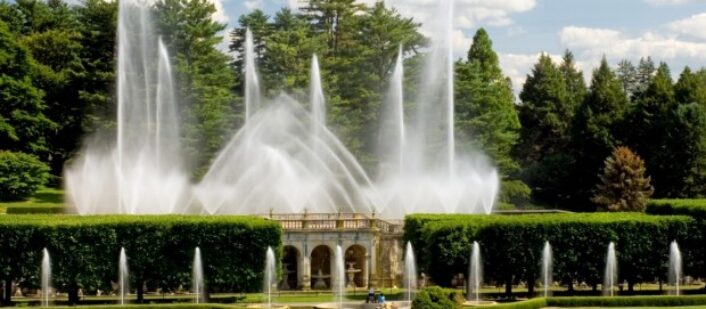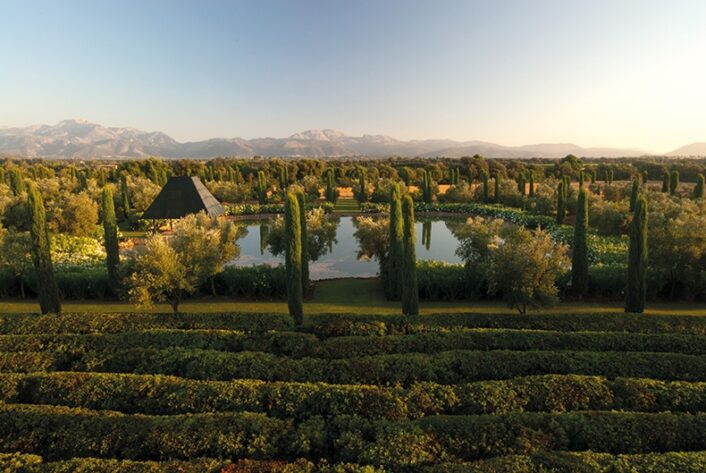Architecture
Sakonnet Garden’s magic
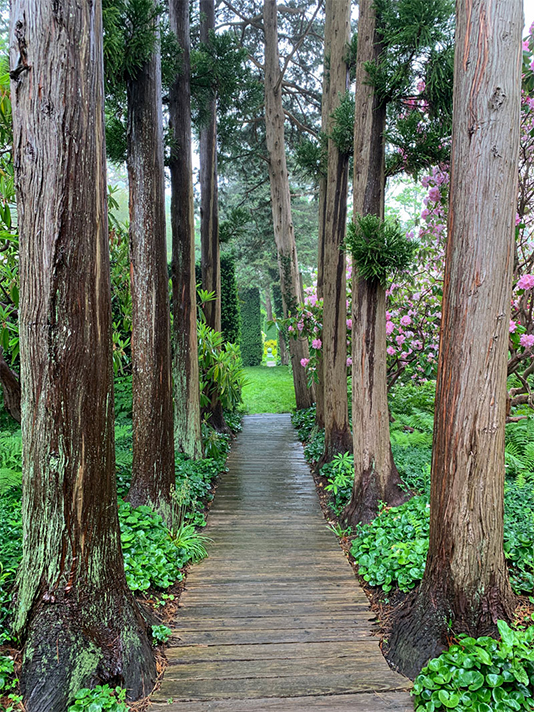
Walking down this “aisle” feels like what Alice probably felt when she fell down the infamous rabbit hole.
Image courtesy of: Private Newport with Bettie Bearden Pardee
It is around this time of year that we often find ourselves longing for beautiful summer days spent in magical gardens. So… what a better time than now to write about a new favorite of our’s: Sakonnet Garden. The private landscape in costal Rhode Island is the work of John Gwynne and Mikel Folcarelli, both formerly from New York City.
For over thirty years, the pair drove back and forth from New York City to Little Compton, Rhode Island to tend and nurture Sakonnet Garden. Not quite two acres of land, the stunning garden is influenced by the pair’s love of traditional English Gardens as well as numerous trips to the Amazon.
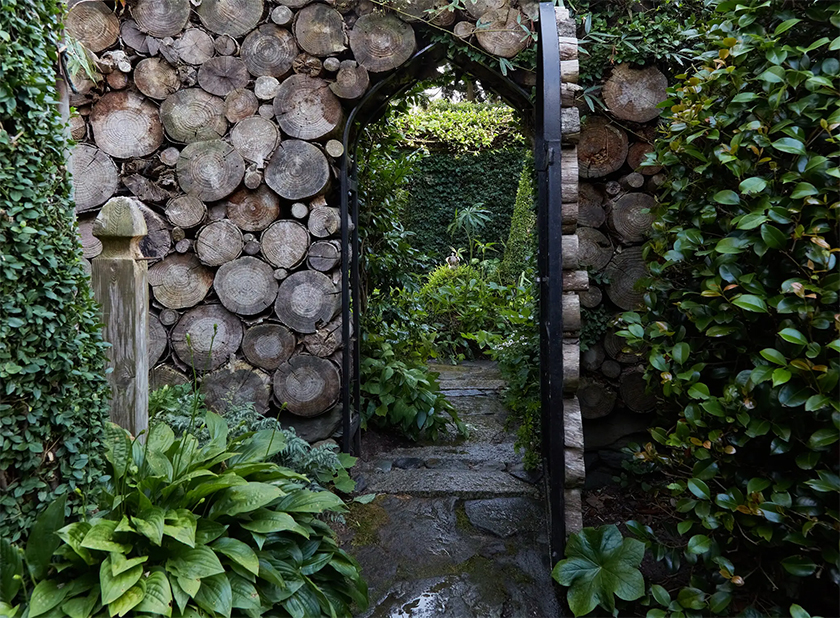
A hidden door beckons visitors. Now, the garden is open to the public, by reservation, three days a week during season.
Image courtesy of: The New York Times, photographed by: Brian Reyes
The land was the place where Gwynne spent a lot of his childhood. Specifically, the designer remembers (courtesy of The New York Times), “working with his sister to bushwhack out plantings spaces from the dark thicket of invasive autumn olive, multiflora rose, and Oriental bittersweet, with narrow tunnels hacked from the underbrush.”
Today, the small garden has fifteen distinct rooms; each one has a whimsical name. Pinkie, for example, is home to a grove of incense cedars and Punchbowl is full of rhododendrons with colors that range from cerise to white. The specific rooms also reference back to Josef Albers’ Color Field Theory where “bold squares of pigment were intensified in the context of carefully chosen adjacent ones.”
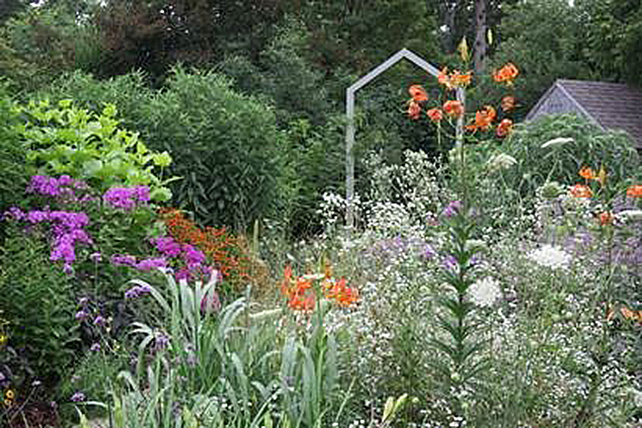
Many of Sakonnet Garden’s plants are not native to Zone 7B.
Image courtesy of: Garden Conservancy
Living walls made from stone or logs present an element of surprise throughout the garden. The separations allow visitors to “regroup” before entering new areas. Additionally, the walls present “microclimate manipulation,” a horticultural technique that helps non-indigenous plants adjust to the maritime environment of coastal Rhode Island.
Years and years of discussion went into deciding which plants would prove most successful in the garden. The men recalled that they would assign themselves a “plant of the week” to discuss; eventually, this was how they choose which plants to include in their special place. It certainly does not hurt that Gwynne, a landscape architect, has spent years collecting plants unavailable locally. Those are often acquired through organizations like American Rhododendron Society and from sellers in the United Kingdom.
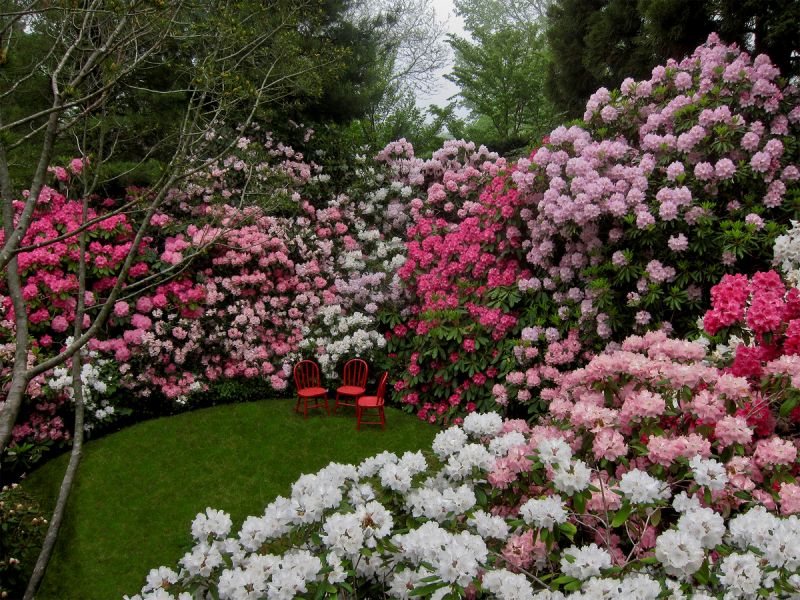
The men love playing with scale. Although the rhododendron look enormous, the small-sized chairs inversely impact the effect.
Image courtesy of: Pith + Vigor Blog
The plan was never to create a garden; the intention was to design a nursery to experiment with growing plants that no one was growing in Rhode Island. In time, Gwynne and Folcarelli began clearing the property’s thicket which resulted in a lot of extra space. The garden is the definition of an organic evolution: pathways were cleared from one bed to another and tresses were moved and rearranged if possible… and, more and more plants were introduced.
A visit requires a lot of physical twists and turns that reveal many curved and undulating design elements. Among the most beloved portions is the ivy-covered chicken-wire and the stacked “log walls” that meander throughout the property.
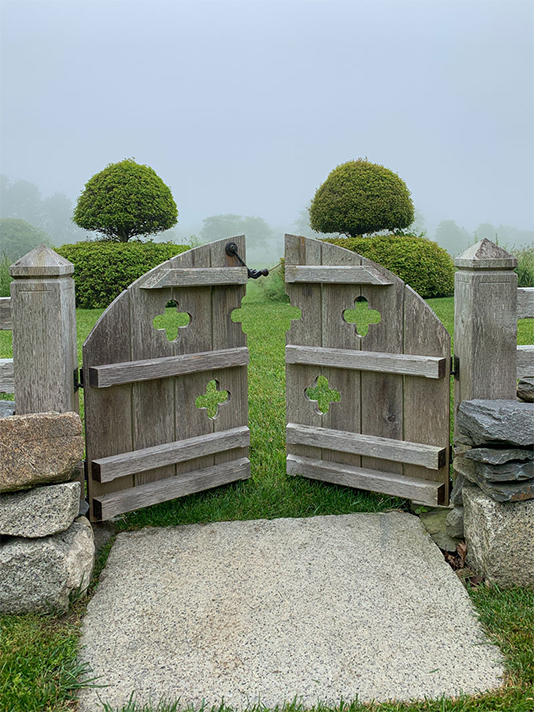
The gate that opens up to the splendid garden.
Image courtesy of: Private Newport
Interestingly, the method was a little backwards. Normally, hardscaping is the starting point and then plants are planted; however at Sakonnet Garden, the plants are always in charge. As Gwynne says, “We just started planting, and fit everything in afterwards. That’s probably why it has such an odd feeling- quixotic and even sometimes silly.”
As visitors enter the garden, Folcarelli often greets them and points in a clockwise direction. As the guests pass through a doorway in a 12-foot wall of stone and logs, they enter a mystical area carpeted in moss and a high-bush of blueberries. A feeling of magic and awe transcends those entering… and often, the sighs of amazement can be heard several “rooms” away!

